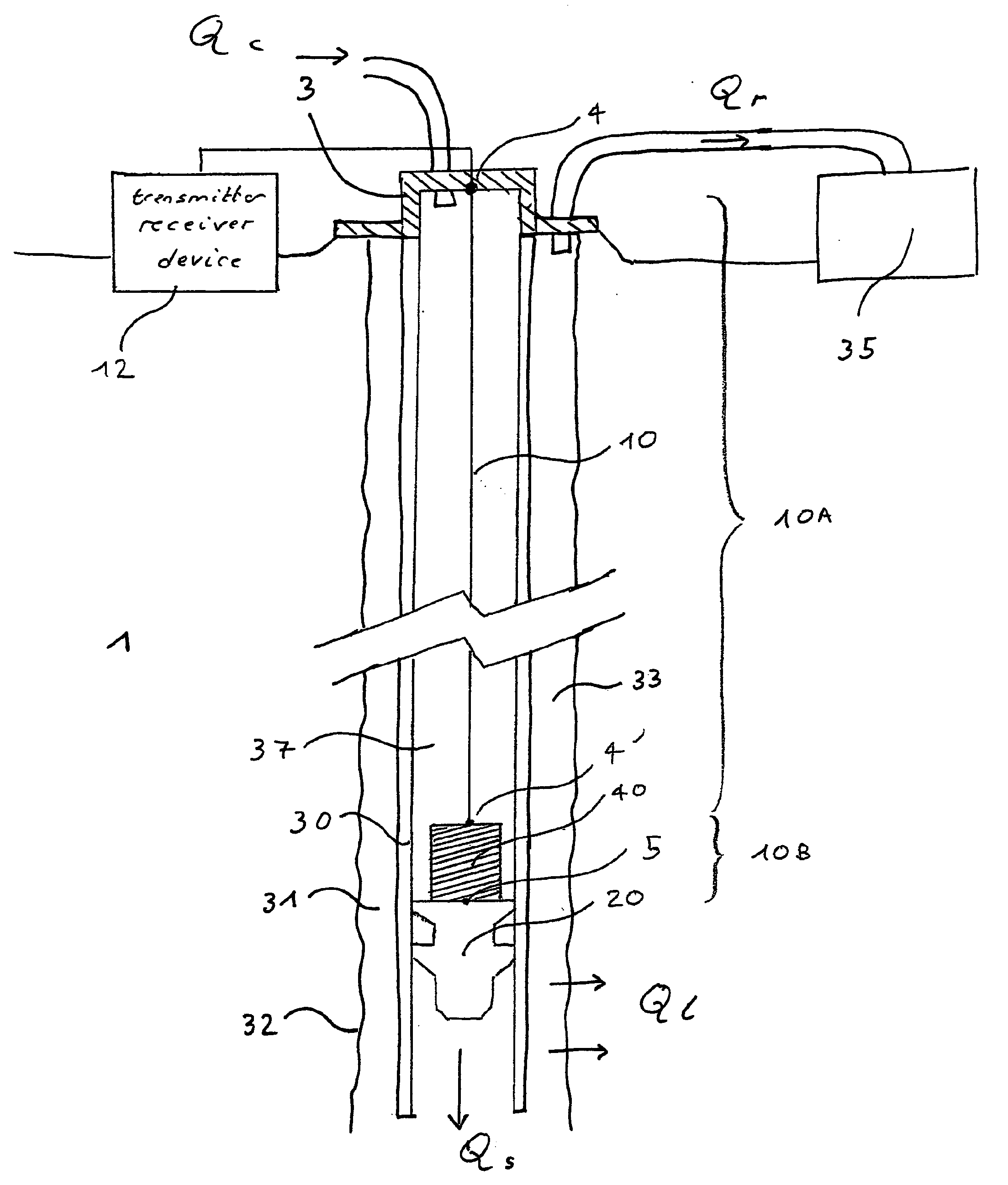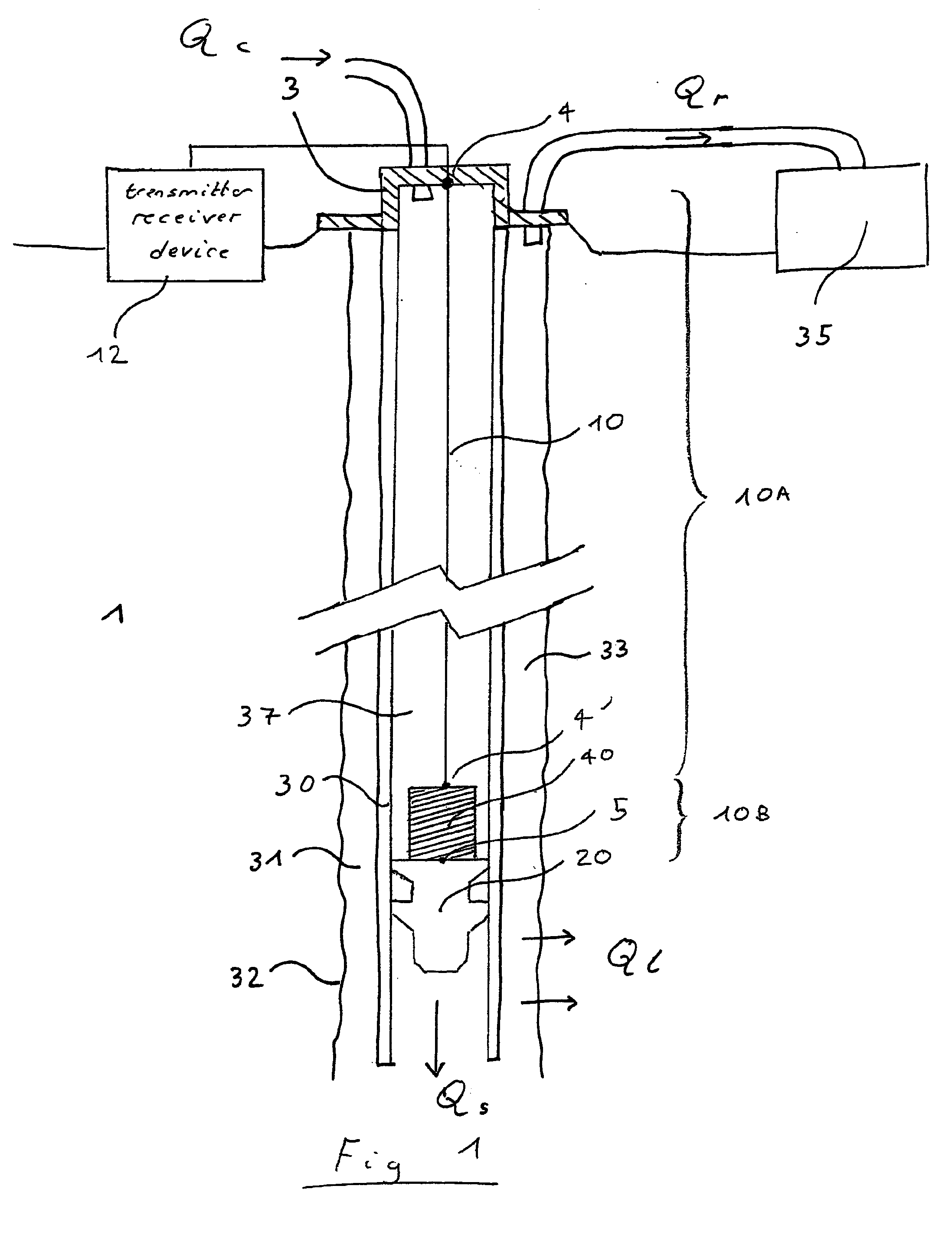Methods and apparatus for measuring return flow in a well
a well and return flow technology, applied in the field of well completion apparatus, can solve the problems of generating a u-tubing phenomenon, cement slurry has a tendency to free-fall, and the inside of the casing and the annulus is affected by hydrostatic pressure imbalan
- Summary
- Abstract
- Description
- Claims
- Application Information
AI Technical Summary
Benefits of technology
Problems solved by technology
Method used
Image
Examples
first embodiment
[0026]In a first embodiment, the reel is made with a short diameter of winding or more precisely a diameter short enough to be detected by the FBL (critical diameter dc or critical radius rc, 2 rc=dc); effectively the short diameter creates an attenuation detectable by the FBL. The reel diameter is short enough to stop the propagation of the optical pulse. The reel diameter able to stop the optical pulse is a function of the pulse wavelength. The reel being seen as the first major optical event, the FBL will measure the length of the deployed fiber up to the reel, i.e. the plug. However also, the diameter of the reel can not be too short; effectively reducing the diameter of the reel can limit the maximum measurable distance to an unacceptable value.
second embodiment
[0027]In a second embodiment, the reel has been specially modified so the reel presents a required minimum curvature short enough to be detected by the FBL. So, the reel can have various geometric shapes; importance is that within the various curvatures present in this reel, there is a minimum curvature (close to rc) which is the required curvature short enough to be detected by the FBL. For example, the shape of the reel can be ovaloid with a wanted curvature. The wanted curvature is short enough to stop the propagation of the optical pulse. The wanted curvature able to stop the optical pulse is a function of the pulse wavelength.
third embodiment
[0028]In a third embodiment, the reel is made with a diameter not necessarily short even large, unable to stop the optical pulse and use the method as described above. In this case an additional element (not shown on the FIGURE) is added on the second position 4′. The additional element corresponds to mechanical path through which the fiber is unwound and bends at a radius short enough to stop the optical pulse. In fact, the additional element creates the optical event. The additional element can be simply an angled tube or an angled collar through which the fiber passes. The radius able to stop the optical pulse is a function of the pulse wavelength. All these advantageous embodiments ensure that the major optical event is located at the second position and is detected more precisely.
[0029]In a fourth embodiment, the fiber is coiled like in the second embodiment at a constant and large radius R, which is greater than the critical radius rc but with a truncation T greater than 1 (tr...
PUM
 Login to View More
Login to View More Abstract
Description
Claims
Application Information
 Login to View More
Login to View More - R&D
- Intellectual Property
- Life Sciences
- Materials
- Tech Scout
- Unparalleled Data Quality
- Higher Quality Content
- 60% Fewer Hallucinations
Browse by: Latest US Patents, China's latest patents, Technical Efficacy Thesaurus, Application Domain, Technology Topic, Popular Technical Reports.
© 2025 PatSnap. All rights reserved.Legal|Privacy policy|Modern Slavery Act Transparency Statement|Sitemap|About US| Contact US: help@patsnap.com



